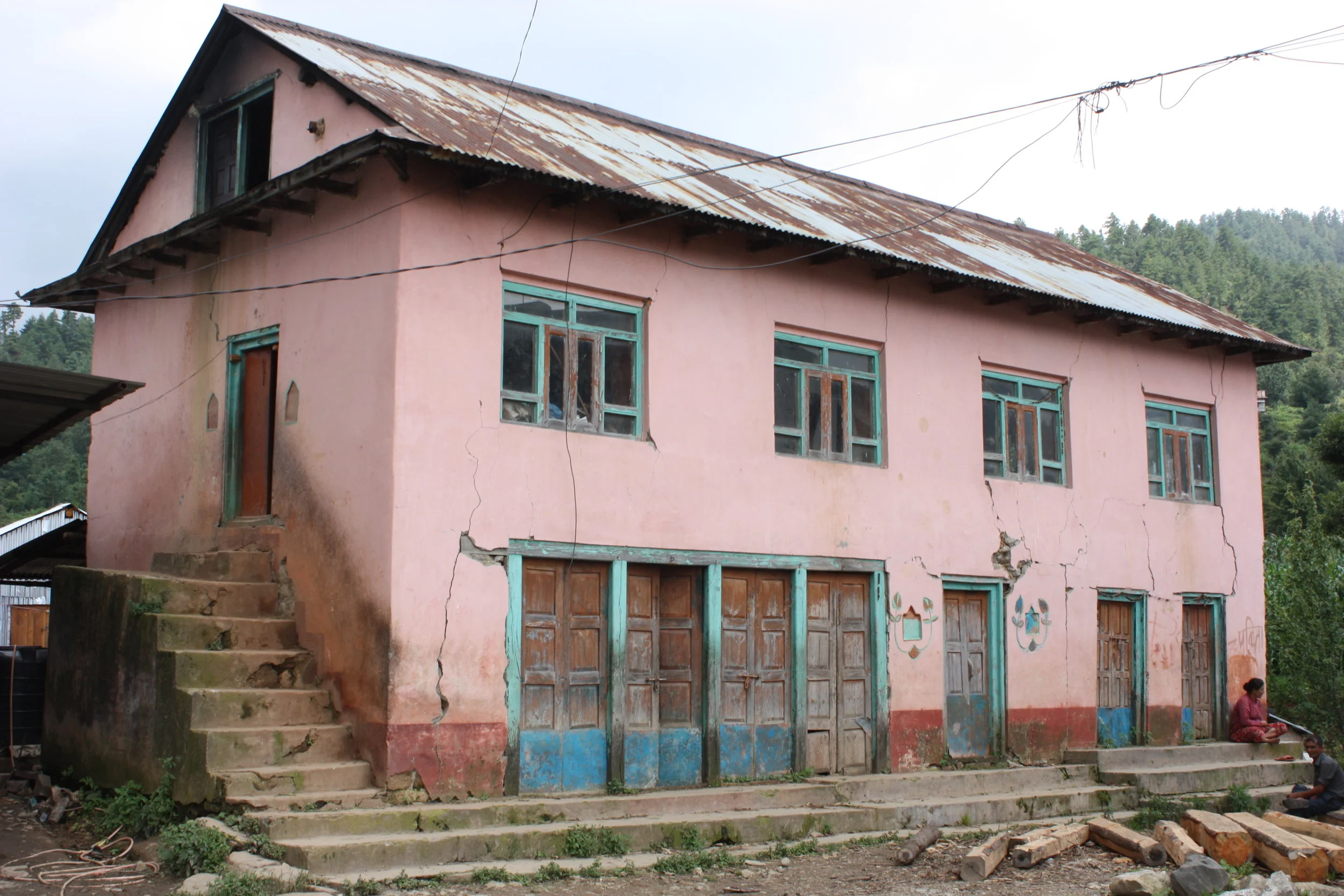When the Vernacular Fails

By Elisabeth van Overbeeke
How should communities and designers respond when vernacular architecture fails because of an earthquake or other disaster? There is something innately beautiful—and practical—about building with materials that are readily available on site, and Nepali architecture boasts centuries of beautiful craftsmanship in stone, brick, and wood.
Three months after the 2015 earthquake, I went to Nepal as part of a disaster response team from Engineering Ministries International, a Christian engineering development organization that provides design and technical services to local organizations around the world. Our team was invited by Tearfund UK, a Christian charity that works globally to end poverty and that has a team working on redevelopment efforts in Nepal. Tearfund UK invited us to contribute our expertise in the design of a training manual for the rebuilding of stone masonry houses. The objective was to propose seismic improvements that could be incorporated with traditional methods in order to get people back into homes as soon as possible.
Our team was made up of three people: our project leader who is a civil engineer, a structural engineer with experience in earthquake resistant design, and myself, a recent architecture graduate. Before departing for Nepal, the team carried out extensive research into stone masonry construction, the Nepal building code, and documents that offered precedent for other stone masonry buildings impacted by earthquakes.
The next step in the team’s research took place during the first several days of a ten day visit to Nepal. We travelled around the Makwanpur region, visiting villages to see how houses are constructed, how they were damaged in the earthquakes, the cost and availability of materials for rebuilding, and what redevelopment initiatives were underway. We arrived in these villages via small gravel roads that wove through the foothills. The road would end and we would walk on foot into the villages that sat on lush slopes and sometimes sat shrouded in cloud. With limited transport and access to the villages, the need to rebuild with traditional, local materials was obvious from the start.
The houses in the Makwanpur region of Nepal are very similar in style and construction. Most have a rectangular footprint and are two storeys tall with an attic. Rural homes are typically built with stone and mud walls and wood joists and rafters. The floors are commonly boards or thatch that are infilled with straw and mud. The roofs are either corrugated steel or more traditional slate tile and have large overhangs to protect the walls from rain. Some houses are finished with plaster though most are left bare. In these places people have no choice but to build with what is immediately available to them, and the resulting homes are beautiful and sit in harmony with the landscape.
While we admired the beauty of the houses that remained standing, it was difficult to take in the many buildings that had been reduced to rubble. Some houses had collapsed altogether, while others had cracks that made people fearful to live in them. Three months after the quake, many people lived in makeshift dwellings constructed from wood and donations of corrugated metal.
The types of failure we saw in the field were similar to what we identified in our preliminary research. While stone is strong against forces of compression (pushing down such as gravity), it is weak against forces of tension (pulling) like the side to side and up and down motion of an earthquake. Stone is also heavy, which magnifies the forces acting on it. The worst damage was usually on the short end of a rectangular house, as the longer end would have more weight to thrust into it. The most common failures observed by the team were out of plane wall failure, wall intersection and corner failures, the wythes of brick splitting apart because of buckling, and the collapse of stone infill gables.
It was clear to us early on that stone and mud would be the most functional and affordable material to use for reconstruction. Stone and mud are available everywhere, the rubble from demolished houses can be reused, and builders are already experienced in building with stone. Wood is available from community forests, though it is a limited and more expensive resource. Materials such as steel, cement, sand, and aggregate are available for transport from cities, though are more expensive and are more difficult to transport to more distant rural areas. Some people had already begun rebuilding, but constructing out of anything they could find and often avoiding stone altogether. In speaking with some of the households whose homes we visited, we learned that they were fearful of rebuilding in stone. There was a need to publicly demonstrate the effectiveness of stone as a safe material when constructed with earthquake resistant techniques that provide the tensile strength that stone lacks on its own. In some cases we found indications of tensile elements in the existing buildings such as corners using larger interlocking stones, or wood strips mudded into the walls.
Our initial research and observations were used to develop a handbook showcasing new building methods in a very concise and procedural way that builders and homeowners would be able to understand. As little text as possible was used. Instead, isometric drawings showed the step by step methods of construction. The techniques were summarized into six key points so that even if households were not building a house themselves, they could still understand the logic behind the techniques: (1) build with a strong foundation; (2) use horizontal reinforcement (ring bands at the foundation, lintel, and roof); (3) use vertical reinforcement (tie the foundation to the walls and to the roof); (4) connect the floor system to the walls; (5) provide junction and through stones to connect the walls together, and; (6) provide a gable that is wood instead of stone.
The proposed techniques are a hybrid to the traditional vernacular building. They allow people to construct using most of the methods they already know, with only a few new techniques introduced. They rely on materials that are available and affordable so that people can rebuild quickly.
At the end of our ten days in Nepal we presented a draft of the handbook to the local Tearfund team. We spent the next month incorporating their feedback and refining the document before giving them the completed manual. Tearfund UK and their local partners are using the material in redevelopment efforts. Their work has included arranging training sessions with local builders to integrate new techniques into traditional building methods, engaging communities and groups of builders by constructing sample homes that use the earthquake resistant techniques, and providing grants to households that follow the techniques in the rebuilding of their own homes.
Elisabeth van Overbeeke is a recent graduate of architecture from the University of Waterloo. She currently works as an intern architect for Philip Beesley Architect in association with Pucher Seifert, and is a research fellow with the Integrated Research Institute (IRI) at the Christian Bilingual University of Congo (UCBC) where she is collaborating on research in digital mapping for application in community development initiatives. Elisabeth has served as a volunteer with Engineering Ministries International (EMI) since 2012, completing two design projects in the Democratic Republic of Congo and this most recent project in Nepal.
Website: www.lifesectionstudio.com





